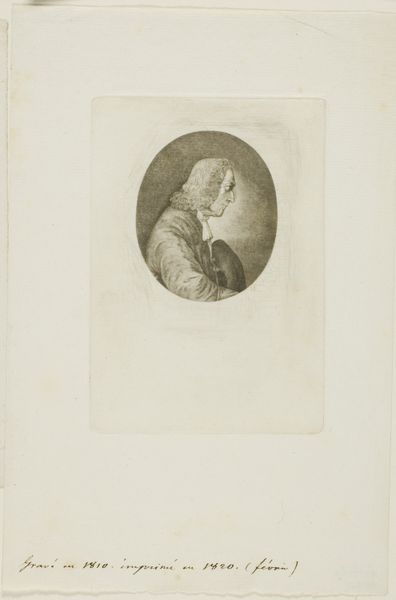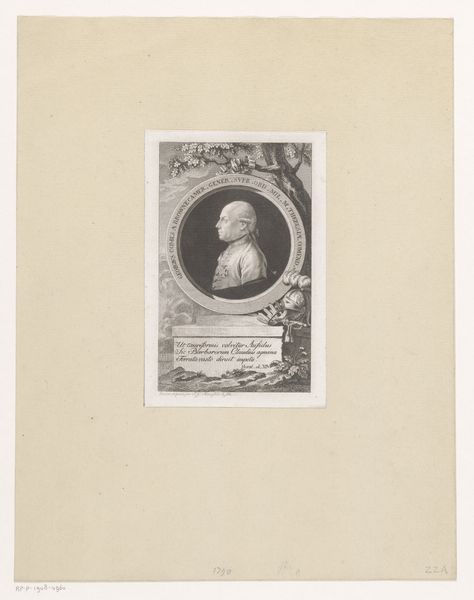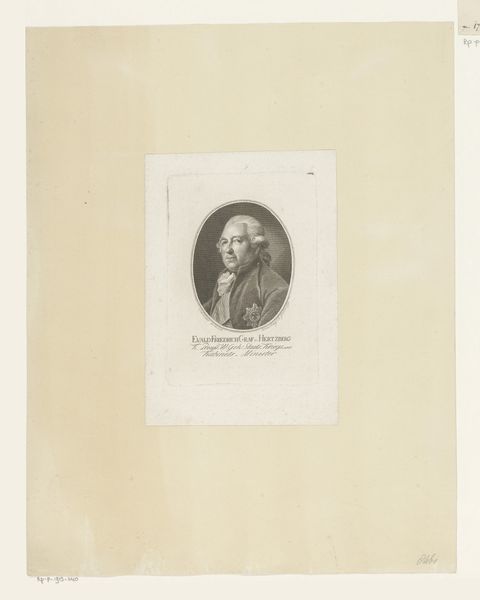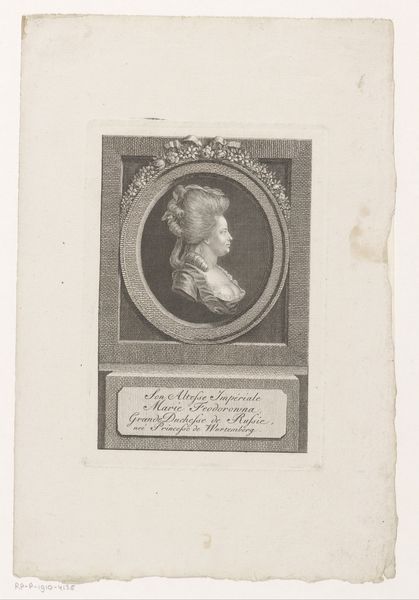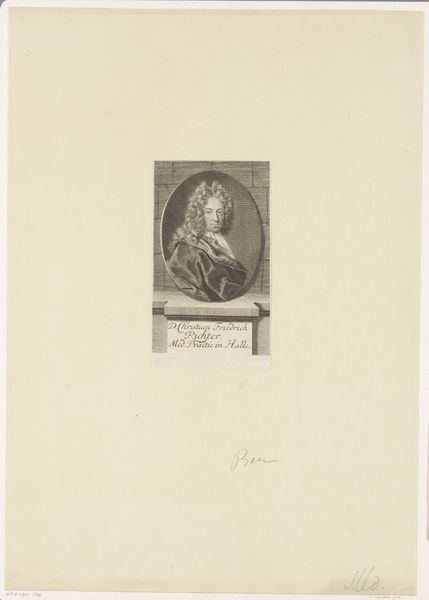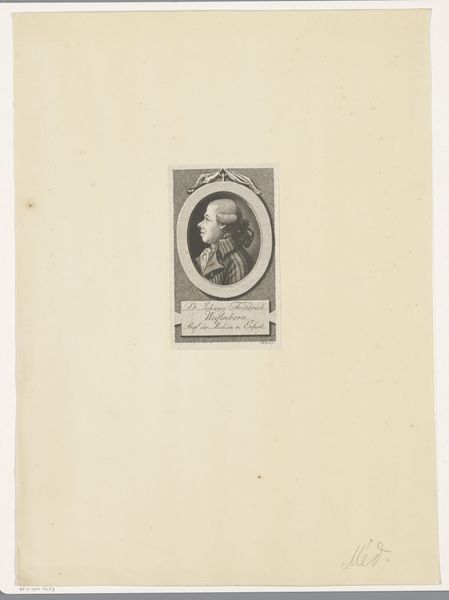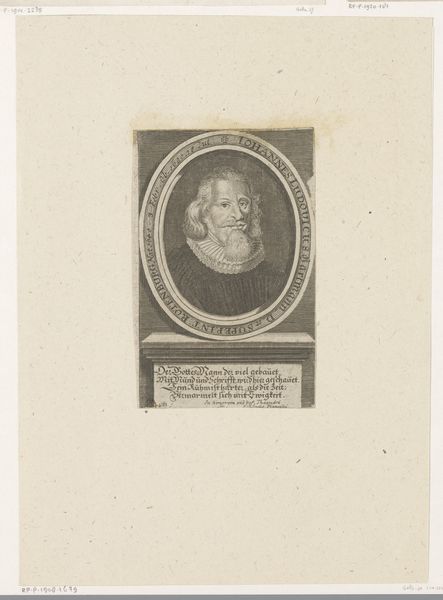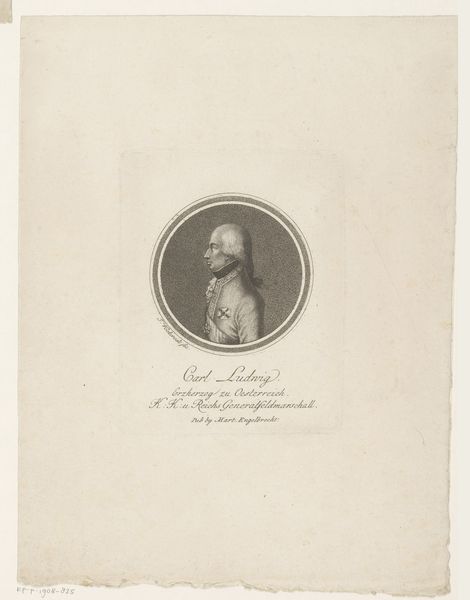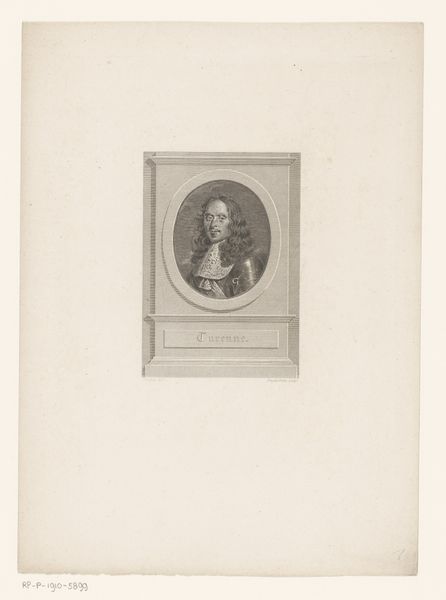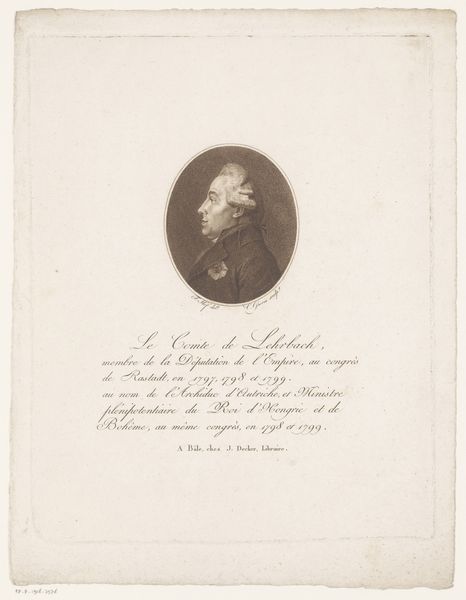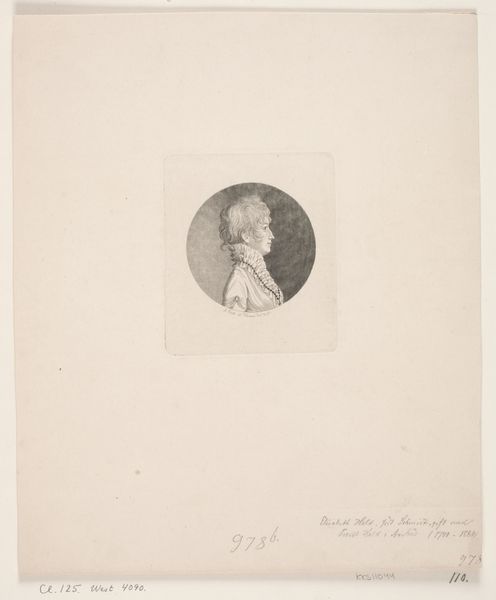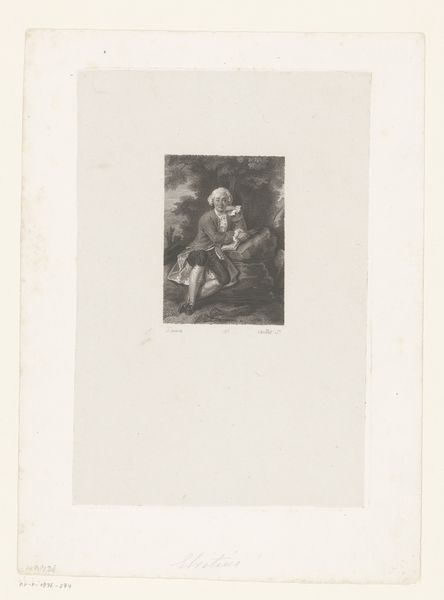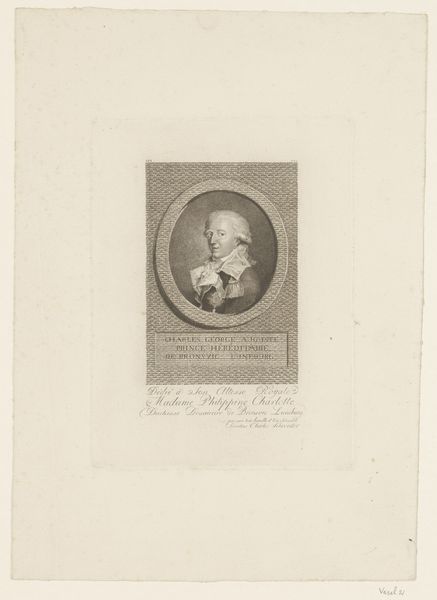
print, paper, engraving
#
portrait
# print
#
paper
#
history-painting
#
engraving
Dimensions: height 129 mm, width 85 mm
Copyright: Rijks Museum: Open Domain
Karl Goepfert made this portrait of William Wynne Ryland in the late 18th century using the technique of etching, printing in brown ink on paper. The fine lines that define Ryland's profile and clothing are a direct result of the etching process. To create this print, Goepfert would have coated a metal plate with a waxy, acid-resistant substance. He then used a sharp needle to scratch away the coating, exposing the metal beneath. This painstaking work demanded skilled labor. The plate was then submerged in acid, which bit into the exposed metal, creating the recessed lines that would hold the ink. The plate was then inked, and the surface wiped clean, leaving ink only in the etched lines. Finally, the plate was pressed onto paper, transferring the image. The choice of brown ink gives the portrait a warm, classical feel, fitting for its time. Think about the labor involved in creating this print, a process that straddles the line between craft and art, revealing much about the cultural values placed on skill, reproduction, and portraiture during this period.
Comments
No comments
Be the first to comment and join the conversation on the ultimate creative platform.
